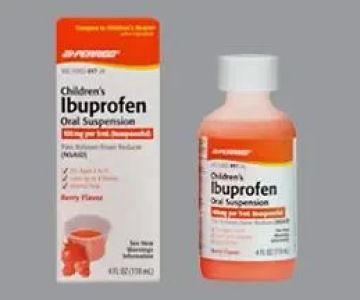Understanding Why Children with Asthma Cannot Take Oral Corticosteroids
Asthma in children is a complex respiratory condition requiring careful medication management. While corticosteroids play a crucial role in controlling inflammation, oral corticosteroids are often avoided or used with caution in pediatric asthma patients. Understanding the nursing considerations behind this restriction helps ensure safe and effective asthma care for children across the United States.
Oral corticosteroids like prednisone reduce airway inflammation but come with significant potential side effects, especially in developing children.
The Role of Corticosteroids in Asthma Treatment
Corticosteroids are powerful anti-inflammatory drugs essential in managing asthma symptoms and preventing exacerbations. They are available in various forms, including inhaled, oral, and intravenous.
1. Inhaled Corticosteroids: The Preferred Choice for Children
For long-term asthma control, inhaled corticosteroids are generally preferred for children because they deliver medication directly to the lungs, minimizing systemic absorption and side effects.
This approach ensures effective inflammation control with a lower risk profile compared to oral forms.
2. Oral Corticosteroids: Reserved for Severe Cases
Oral corticosteroids are typically reserved for severe asthma attacks or exacerbations when rapid systemic anti-inflammatory effects are needed. However, routine or prolonged use is discouraged in children due to possible adverse effects.
Nursing Considerations and Risks of Oral Corticosteroids in Children
Nurses caring for pediatric asthma patients must be aware of several risks associated with oral corticosteroids, including:
1. Growth Suppression
Prolonged oral corticosteroid use can interfere with normal growth and development in children, making it a critical concern for pediatric care providers.
2. Immune System Suppression
These medications can suppress the immune response, increasing susceptibility to infections—a significant issue in children with immature immune systems.
3. Behavioral and Psychological Effects
Some children may experience mood swings, irritability, or difficulty sleeping during oral corticosteroid treatment, impacting their overall well-being.
4. Other Side Effects
Potential side effects include weight gain, high blood pressure, and gastrointestinal issues, all of which require monitoring by healthcare professionals.
Alternatives and Safe Practices in Pediatric Asthma Management
Because of these risks, healthcare providers often prioritize inhaled corticosteroids and other medications such as leukotriene modifiers or long-acting beta-agonists for managing asthma in children.
When oral corticosteroids are necessary, nurses play a vital role in careful dosing, monitoring for side effects, and educating families on medication adherence and safety.
A Real-Life Scenario: Caring for Liam
Liam, a seven-year-old boy with moderate asthma, was admitted for a severe exacerbation. His care team opted for a short course of oral corticosteroids under strict supervision, combined with inhaled medications. Nurses closely monitored Liam for side effects, provided education to his parents, and ensured follow-up care. This multidisciplinary approach balanced effective treatment with safety concerns, illustrating best nursing practices.
Empowering Families and Healthcare Teams
Educating families about why oral corticosteroids are limited in pediatric asthma helps improve compliance and reduces anxiety around treatment. Nurses and clinicians should collaborate closely to tailor treatment plans that prioritize safety while controlling symptoms effectively.
For expert guidance and resources on pediatric asthma care, visit Dentistry Toothtruth, where trusted advice and comprehensive support are readily available.






 Innovative Oral Surgery & Dental Implants4.0 (591 review)
Innovative Oral Surgery & Dental Implants4.0 (591 review) Distinctive Smiles of Dublin4.0 (399 review)
Distinctive Smiles of Dublin4.0 (399 review) Advanced Endodontics4.0 (71 review)
Advanced Endodontics4.0 (71 review) AZ Family & Kid's Dental4.0 (146 review)
AZ Family & Kid's Dental4.0 (146 review) Stephen M Weisner DMD5.0 (7 review)
Stephen M Weisner DMD5.0 (7 review) Dr. Kenneth J. Kalil0.0 (0 review)
Dr. Kenneth J. Kalil0.0 (0 review) The Importance of Oral Health Education During Pregnancy for a Healthy Pregnancy
The Importance of Oral Health Education During Pregnancy for a Healthy Pregnancy Best Tips for Brushing Your Teeth Properly for Healthy Gums: Essential Techniques for Oral Health
Best Tips for Brushing Your Teeth Properly for Healthy Gums: Essential Techniques for Oral Health Why Skipping Dental Checkups Can Lead to Bigger Oral Health Problems
Why Skipping Dental Checkups Can Lead to Bigger Oral Health Problems Advantages of Porcelain Dental Restorations
Advantages of Porcelain Dental Restorations How Can Diabetes Cause Tooth and Gum Problems? Preventing and Managing Oral Health Issues
How Can Diabetes Cause Tooth and Gum Problems? Preventing and Managing Oral Health Issues Healthy Habits for Promoting Good Oral Health and Hygiene: Tips for a Healthy Smile
Healthy Habits for Promoting Good Oral Health and Hygiene: Tips for a Healthy Smile